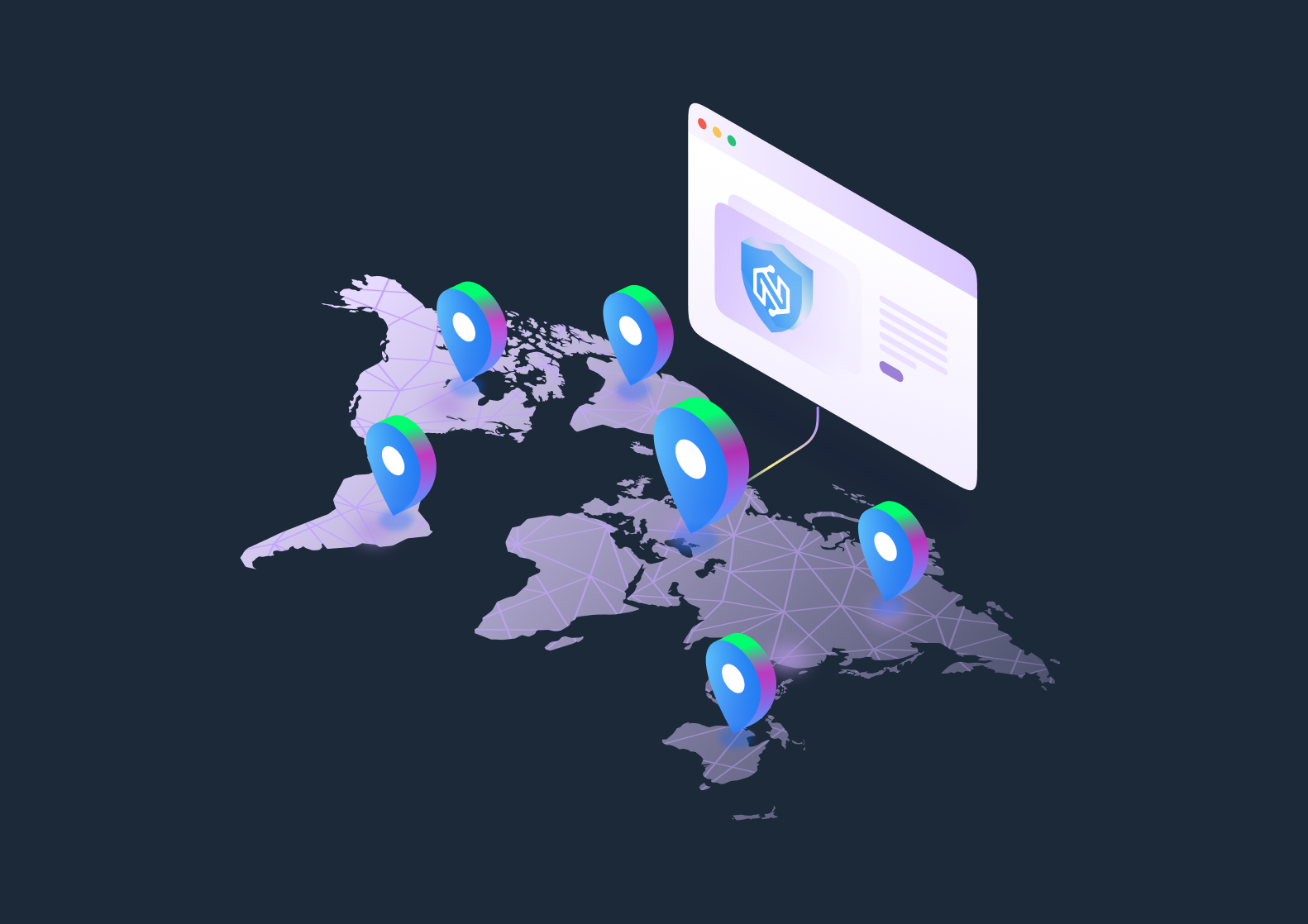How to Test Proxy: A Step-by-Step Guide That Actually Works
If you’ve ever bought proxies only to find them slow, unreliable, or already flagged, you’re not alone. Many people jump straight into using proxies without testing them properly, and it ends up costing time, money, and sometimes entire accounts. Learning how to test proxy servers correctly is one of the most valuable skills if you depend on proxies for automation, account management, or data collection.
This guide walks through a full process for testing proxies, from checking their reputation and speed to verifying their stability and real-world performance, so you can trust your setup before scaling.
Why Testing a Proxy Before Buying Matters
Every proxy provider claims to have fast, clean, and undetectable IPs. But unless you test them yourself, you have no proof. Some IPs are already blacklisted, while others come from datacenters disguised as “residential” or “mobile.” Testing removes the guesswork. A proper proxy test tells you if the IP looks legitimate, how stable the connection is, and whether the location matches what you purchased.
Skipping this step is risky. If you’re managing multiple accounts or automating workflows, even one unstable proxy can trigger flags and bans. Running a few proxy speed tests and reputation checks upfront will show you which IPs are worth keeping and which ones will cause trouble later.
The Tools You Need to Run a Proxy Test
You don’t need expensive software to start testing. A few free, reliable tools can tell you everything you need to know about your proxies. For IP reputation and detection, Pixelscan.net and Whoer.net are popular choices.
They show how websites see your IP, whether it looks like a VPN, a datacenter, or a normal user connection. IPQualityScore.com is great for analyzing IP trust levels and ASN ownership. For connection performance, use Speedtest.net or Fast.com to measure download, upload, and ping. To detect leaks that could expose your real IP, try BrowserLeaks.com. And for network-level checks, simple command-line tools like “ping” and “traceroute” work perfectly.
If you manage many proxies, you can also use an automated proxy tester tool. These apps check dozens or hundreds of IPs at once and report metrics like uptime, latency, and blacklist status. But for most people, manual testing of five to ten proxies per provider gives a good picture of the pool’s quality.
Step 1: Run an IP Reputation Check
Start by seeing how your proxy appears to the outside world. When you connect through a proxy, websites see its IP, not yours. That IP should look like a real user connection, not a known VPN or server. Load your proxy in a browser or proxy management tool, then visit Pixelscan.net or Whoer.net. Review the results carefully.
If you see labels such as “VPN,” “Hosting Provider,” or “Datacenter,” that’s a clear red flag. Good residential or mobile proxies should show a real ISP name and a location that matches what you paid for.
Don’t stop after testing just one IP. Some providers give you a few clean IPs during free trials but deliver poor-quality IPs later. Test at least five random proxies from the same provider to get a true sense of what you’ll actually receive.
Step 2: Verify ASN and Subnet Diversity
Even if an IP looks clean, it might still belong to a limited or overused range. Every IP address is part of an ASN(Autonomous System Number), which shows who owns that range. Go to ipinfo.io or ipapi.co, enter your proxy IP, and check the ASN and subnet.
If all your proxies share the same ASN or the same /24 subnet, they’re not diverse enough. That means hundreds of users could be sharing the same small block of IPs, making detection easier for websites.
Ideally, your test proxies should come from different ASNs and ISPs. This variety helps reduce pattern detection and prevents mass bans when multiple accounts are running. If you notice the same provider name repeating across your results, that provider likely recycles IPs or buys small subnets from datacenters, which is another bad sign.
Step 3: Perform a Proxy Speed Test
Speed determines more than just browsing comfort, it reflects connection quality and stability. A proxy speed testshould measure three things: latency (ping), download speed, and upload speed. Connect through your proxy and visit Speedtest.net or Fast.com. Record the results, then repeat a few times at different hours of the day.
Good proxies typically show ping times under 100 milliseconds and consistent upload/download speeds. If latency fluctuates heavily, from 20ms to 600ms between tests , that proxy isn’t stable. If upload speeds are very low compared to download, the connection might be overloaded. Always test proxies during your normal work hours, because speed can drop sharply when more users share the same network.
Step 4: Check Stickiness and Rotation Behavior
Session stickiness matters when you manage accounts or perform tasks that require long, stable sessions. Some proxies rotate IPs automatically every few minutes or on every request, which is fine for scraping but terrible for logging into websites.
To test stickiness, connect through one proxy, open ipinfo.io/json, and leave the session running for at least 20 minutes. Refresh the page occasionally. If the IP stays the same, it’s a sticky session. If it changes by itself, that proxy doesn’t support persistence.
For serious account management, choose providers that offer configurable rotation, say, 10 minutes, 30 minutes, or even 24 hours. The ability to control rotation times gives you flexibility and reduces the risk of being flagged for sudden IP changes mid-session.
Step 5: Confirm GEO Accuracy
Many users buy proxies for region-specific work, running local ads, managing country-based accounts, or scraping localized data. That’s why it’s essential to confirm the geographic accuracy of your IPs. Visit Whoer.net or iplocation.ioto see the IP’s country, city, and ISP. The results should match what your provider promised.
If you purchased US proxies but they appear in Germany or Singapore, that’s a major problem. It often means traffic is being rerouted through another region, which can break geo-targeted tasks or raise suspicion.
Always check several IPs from each batch. Some providers mislabel regions or mix residential and datacenter routes without telling customers.
Step 6: Check for DNS, WebRTC, and IPv6 Leaks
A clean proxy is pointless if your real IP leaks through another channel. The most common leaks happen via DNS, WebRTC, or IPv6. Visit browserleaks.com or dnsleaktest.com while connected through your proxy. If you see your home ISP or local IP in the results, you’ve got a leak. Disable IPv6 on your device, turn off WebRTC in your browser settings, and retest. When configured correctly, only the proxy’s IP and DNS servers should appear.
This test is especially important if you use an anti-detect browser. Each profile should be tested separately, because some browser setups may leak even when others don’t.
Step 7: Test Proxy Performance on Real Websites
The most important test is always real-world use. Even if your proxy passes every scan, the real question is how it behaves on the sites you care about. If you’re using proxies for Facebook, TikTok, or e-commerce platforms, log in and try simple actions. If you get captchas or access errors immediately, that IP is likely flagged.
For scraping or automation, send a few test requests and watch for connection errors, rate limits, or temporary bans.
A proxy test in a live environment tells you more than any lab tool ever will. Start small, five or ten proxies, and see how they perform during your actual campaign hours. It’s better to identify weak IPs early than to lose progress later.
Step 8: Monitor IP Consistency Over Time
Proxies change over time. An IP that looks clean today might appear on a blacklist next week. That’s why you should repeat tests regularly, especially before new projects. Keep a simple log that includes proxy IPs, speed test results, and block statuses. After a few rounds, you’ll see which providers maintain stable performance and which ones decline.
High-quality proxies should show uptime above 95% and stable latency. If your proxies keep dying or shifting locations, the provider isn’t maintaining its network properly.
Step 9: Use an Automated Proxy Tester for Large Pools
When you manage hundreds or thousands of IPs, manual testing becomes impossible. That’s where automated tools help. Apps like ProxyCheck.io, Proxyway’s testing toolkit, or simple scripts written in Python can test multiple proxies in bulk.
They check latency, uptime, and country accuracy and often export the data into a spreadsheet. This makes it easy to filter out dead or slow IPs before deploying them.
Automation also helps you monitor changes over time. A scheduled proxy test that runs daily or weekly keeps your pool clean and saves you from sudden network issues.
Step 10: Identify Blocked or Flagged IPs
Not all blocks are obvious. Some sites silently rate-limit requests or shadow-ban certain IP ranges. To test proxy server reliability for your specific target, visit the sites you’ll be using. Try logging in, browsing, and performing basic actions. If you’re met with captchas, session resets, or delays, that IP is already on a flagged list.
For sensitive operations like advertising platforms or financial sites, you want IPs that feel like genuine users, not automation.
Use different target sites during testing. A proxy that fails on Facebook might still work fine for scraping. The goal is to match the proxy’s strength to your actual use case.
Step 11: Ranking and Comparing Providers
After completing all tests, review your results. Create a simple comparison table listing providers, average ping, success rate, leak status, and GEO accuracy. You’ll quickly see which ones stand out.
Don’t be tempted by cheap pricing if the results show unstable or recycled IPs. Good proxies cost more because maintaining high-quality IP pools requires effort and constant filtering.
A provider with diverse ASNs, stable connections, and clean reputations is worth the investment. Document your findings so you can make data-based decisions instead of guessing.
Step 12: Make Proxy Testing a Routine
Testing shouldn’t be a one-time process. Proxy networks evolve, and their quality changes as IPs move between customers. Make it a habit to retest your proxies monthly or before launching major campaigns. Keep a spreadsheet or dashboard of your proxy test results, provider, type, success rate, and last test date. Over time, you’ll build your own benchmark for what “good” performance looks like, and you’ll instantly spot when something starts to slip.
Common Testing Mistakes to Avoid
Many users fail because they test only one IP, trust free trial results, or skip key checks like ASN diversity. Another common mistake is testing proxies using browsers or tools that still leak local IP information, which makes the test meaningless.
Others focus only on speed without realizing that reputation and stability matter more. A fast proxy that gets blocked within an hour is worse than a slower but clean one.
Avoid shortcuts. Each step, speed, leak, rotation, and fingerprint checks, matters equally. Proper testing is what separates working setups from constant troubleshooting.
What Good Proxy Test Results Look Like
After completing all your tests, you should have a clear picture of what a high-quality proxy looks like. It will have a clean IP reputation with no VPN or datacenter tags, belong to a trusted ASN, show stable latency below 100ms, and pass all leak checks. Its geographic data will match your order, and it will hold the same IP throughout your session.
Most importantly, it will perform smoothly on your target platforms without blocks or frequent captchas. Those are the proxies worth scaling.
How Choosing NodeMaven Proxies Will Improve Your Browsing?
When you start running proxy tests, you quickly see that not all IPs are created equal. Some look clean but rotate too fast. Others are fast but easily detected as VPNs. That’s where NodeMaven comes in — a platform designed to solve these problems for users who care about real, testable quality.
Here’s what makes NodeMaven different:
- High-Quality IP Filtering:
Every IP passes through NodeMaven’s proprietary IP Quality Filter, removing flagged or datacenter addresses before they ever reach customers. This means fewer bans, cleaner fingerprints, and stronger test results. - Residential and Mobile IPs Combined:
You can switch between real residential and mobile proxies at the same price. That flexibility lets you test which type performs better for your specific workflow without extra cost. - Long Sticky Sessions (Up to 24 Hours):
Maintain the same IP for extended periods when testing stickiness or running long sessions. Perfect for account management, ad verification, and e-commerce setups. - Exceptional Stability and Speed:
High uptime, low latency, and minimal error rates make it easy to perform consistent proxy speed tests with predictable results. - Precise GEO Targeting:
Choose country, city, or even ISP-level targeting. It allows accurate proxy test validation for location accuracy and region-specific tasks. - Traffic Rollover System:
Any unused bandwidth rolls into the next billing cycle, so you never lose data while running extended proxy testing routines. - Flexible Pay-as-You-Go Pricing:
Scale up or down without long-term contracts. Ideal for users who test in small batches before committing to higher traffic volumes. - Expert Support from Proxy Specialists:
Real human support via Telegram, Slack, and WhatsApp. You can get help setting up or troubleshooting proxy tester tools and testing workflows directly from industry experts.
Final Thoughts
Testing proxies isn’t complicated, but it does take patience. A proper test involves checking reputation, ASN, speed, stickiness, leaks, and real-world performance. When done correctly, it saves you from account bans, wasted money, and unreliable setups. Once you know how to test proxy servers with a consistent process, you can confidently filter out weak IPs and build stable systems that last.
Always remember: a clean proxy today can turn bad tomorrow, so test regularly. Use automated tools when scaling, keep records of your results, and never skip a reputation check. With structured testing and high-quality providers like NodeMaven, your operations will stay faster, safer, and more reliable across every project.


